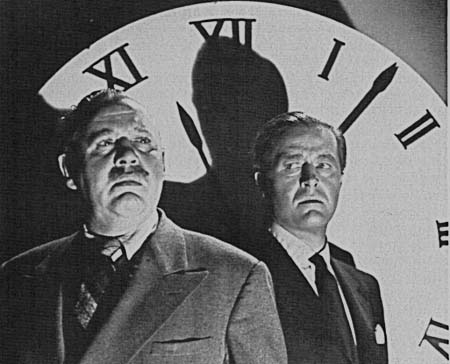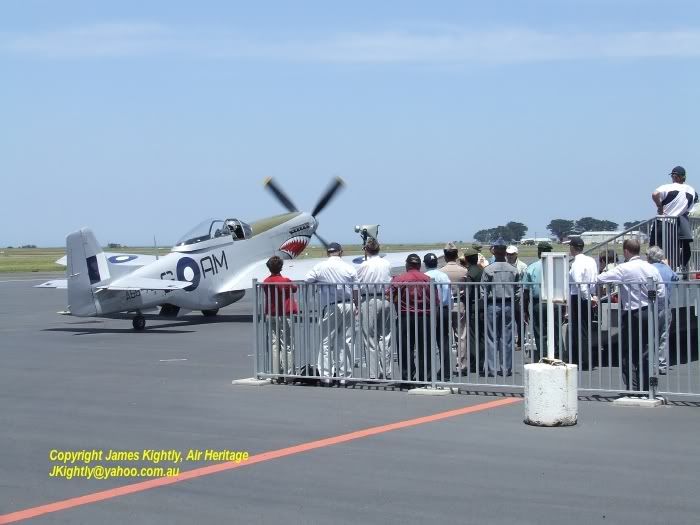
We recently took in two
Film Noir movies thanks to our local excellent independent video store. Both were surprising (which is, after all part of the point) one being excellent, the other thoroughly deserving the term pants*. The trick is that the awful one was a much-lauded early Hitchcock -
The 39 Steps (1935 - IMDb
page). Hitch is, rightly, regarded as one of the all time greats, but here he was having an off film - which has strangely garnered multiple great reviews.

I checked the box to ensure we'd got the right film, and we had. The reviewers seem to have seen another film to the one we saw. The reviewers example apparently had continuity, acting and a plot that would convince someone over six. In ours, star Robert Donat playing Hannay as a bizarre Canadian (rather than the book's South African) is 'suave' to the point of being smarmy.

Perhaps it's because the original
The 39 Steps book by John Buchan is a firm favourite we were a bit more critical, but considering Hitch and the scriptwriters had thrown the entire plot into a blender that's hardly a germane criticism. The bizarre mix of location work and studio Scottish moors with
papier-
mâché rocks was amusing, but the nadir was speeding up the film of police chasing our hero across the moor... No, that belongs only in the
Keystone Cops. The ending was risible.

These stills have been lifted from this
site, that offers a stop motion version of Hitch's film. If you must waste time on it, this is a good short cut..
Who's the villain? Tonight we had
The Big Clock. 1948 (IMDB
link). Not a cast you'd expect for a great
Noir, except perhaps Mr Laughton (whose moustache looked like he'd had some strange injury). But they were a strong, if unlikely, ensemble. (The
Bride of Frankenstein; Lois Lane running the elevator; the good commander from
M*A*S*H; and the silent Elisha Cook Jr type torpedo aren't quite what you'd expect, surely?)

Nevertheless, it set up several remarkable scenarios, was well paced and had several genuine surprising shocks and twists, and a great ending.
The wardrobe was great too, the combination of the 1948 men's sharp suits and hats (didn't they cut themselves on the brims?) and women's 'robes'. (No dear, I can't believe anyone ever wore one of
those - and not over
that! And you aren't going to bed with
that bow around your neck, m'dear.)

But as well as the titular clock (a great, bizarre piece of engineering, well used in the plot, and not the one in the publicity still - of course) the highlight was an amazing office block masquerading as the base of a publishing empire. Despite a bit of online research I've not found if it were a real building re-used, or simply a set, but it could only have been designed by
Howard Roark.
Allmovies says:
Additionally, the Janoth Publications building where most of the action takes place is almost a cast member in itself, an art deco wonder, especially the room housing the clock mechanism and the lobby and vestibules, all loosely inspired by such structures as the Empire State Building and the real-life Daily News headquarters on East 42nd Street.
The film is based on a book by author and poet
Kenneth Fearing. It was, apparently, his big breakthrough, and made him a mint, but he signed away the film rights and drank himself to death. One quote hit a note:
People who worked with him remember that in the afternoons he would have to put his head on his typewriter and sleep.
Hmmm. A modern keyboard just won't do. Still this plot's a great legacy.
With crime, newspapers, pace and action of course one is reminded of
His Girl Friday / The Front Page. (A quick newspaper film primer on the subject
here.) The odd thing is while
The Front Page was based on a play,
The 39 Steps feels like a play adaptation, despite the many exteriors, but the claustrophobic
The Big Clock, which you'd
expect to feel theatrically derived, has no such restrictions.

As you'd want, from this review featuring
Noir, there was a twist or two. Confess you expected the Hitchcock effort to be the success, and
The Big Clock to be the fall guy!
[Surging strings and chop cut]
Shock Hitchcock error! We have some secret watchers, who
stand
right
under
the
streetlight. Oh dear ~
It's 1935 amateurs again!

CUT & PRINT!
James
*'Pants': Nonsense, rubbish, bad. From the standard British English of pants, meaning underwear; also a variation on 'knickers'. E.g."The first half was pants but I stayed until the end and it was actually a great film." [1990s]
 We were lucky when we were in Florence that the weather was pretty good, and the tourists were at only a 0.7 of a RK 'Seethe'TM. Sometimes the light showed a view of something that's just so familiar you just don't see it properly any more. Above is an angle that just leapt out at me when we were down-sun of the Duomo. The backlit cross and ball on the dome were magical. (But of course, not quite as good as the far more classy Lucca Duomo. One must maintain one's loyalty to one's own Italian town. Florence remains just a slumming option for a Luccese boy.)
We were lucky when we were in Florence that the weather was pretty good, and the tourists were at only a 0.7 of a RK 'Seethe'TM. Sometimes the light showed a view of something that's just so familiar you just don't see it properly any more. Above is an angle that just leapt out at me when we were down-sun of the Duomo. The backlit cross and ball on the dome were magical. (But of course, not quite as good as the far more classy Lucca Duomo. One must maintain one's loyalty to one's own Italian town. Florence remains just a slumming option for a Luccese boy.) Then again, I know I'll never look at David's knees quite the same way in future.
Then again, I know I'll never look at David's knees quite the same way in future.



































